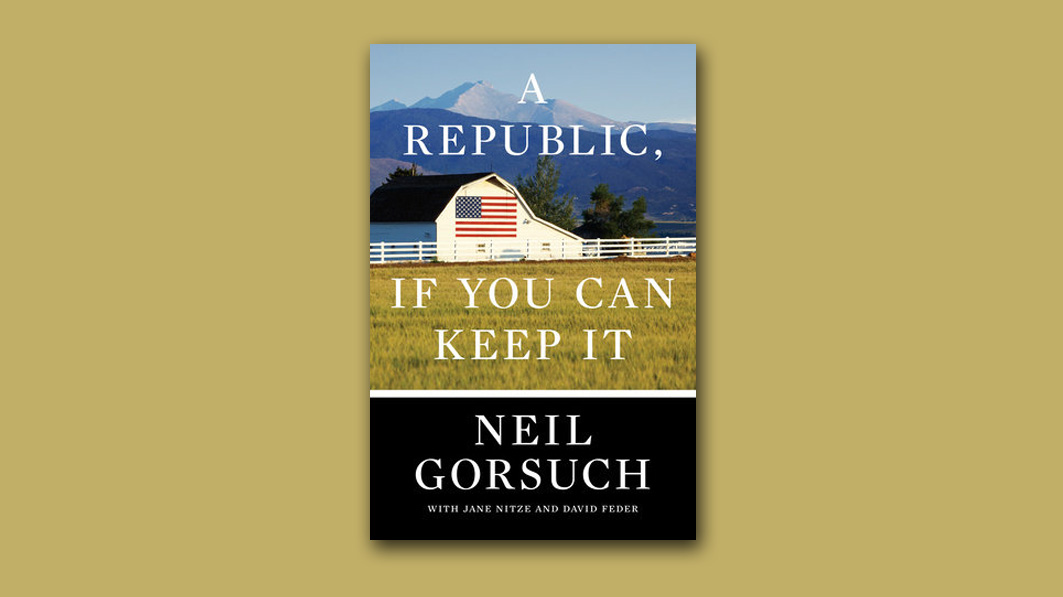Are Supreme Court Justices Just Politicians in Robes? Justice Gorsuch Responds.

As the new term of the Supreme Court begins on October 7, we can already look ahead to an eventful nine months that will involve approximately 70 cases the justices will hear and decide. When the last opinion is published in late June, we’ll see important decisions involving: employment discrimination involving transgender and homosexuality issues; abortion regulations; gun control; and immigration, among others.
And the decisions involving some of the aforementioned “hot-button” topics will undoubtedly end up in split decisions, perhaps even 5-4, “conservatives” vs “liberals,” and the media and court observers will again conclude that the Court is hopelessly divided along political party lines. We will bemoan the continuing deterioration of Senate judicial confirmation hearings, as Republicans and Democrats attempt to obtain “pledges” from nominees as to how they will vote in certain cases. And the cycle will repeat year after year.
And a majority of poll respondents will conclude that the Supreme Court is “too political” and politicians will propose (and sometimes threaten) either term limits or court-packing as solutions for the supposed problem.
But is that really the case? Is the Court “political” in the ordinary understanding of the term? Do justices weigh the pros and cons of the various policies behind the laws they are asked to interpret, and then pick the best one—in their minds—for the country?
Several justices have weighed in on that question already. Chief Justice John Roberts says “no.” Justice Ruth Bader Ginsburg recently pointed out there were a number of cases last term where the justices did not divide along party lines. Justice Brett Kavanaugh, at his confirmation hearings, emphasized that “we are not Republican judges or Democratic judges. We are independent, United States judges.”
Justice Neil Gorsuch just finished his new book, A Republic, If You Can Keep It, which contains his thoughts and speeches on a variety of subjects, including the issue of judicial independence. He thinks that the press and politicians highlight the conflicts because controversy sells.
“To be sure, some people these days like to magnify the work of the Court in dramatic ways,” he writes. “When many write or speak of the Court’s decisions, they tend to focus on disagreements. I guess conflict generates clicks and clicks generate money. But that can paint a misleading picture. Sure, we disagree sometimes on the hardest cases in our whole country. But professional disagreements are expected in our line of work, and they are not the same thing as personal ones.”
The justice paints a picture of collegiality and respect at the court.
“It’s not unusual for 40 percent of cases a term, or even more, to be decided unanimously. And that’s no small thing. It takes mutual respect and a lot of just plain hard work to get nine people, appointed by five different presidents over a span of almost thirty years and from across the country, to agree on the outcome of hard cases where lower court judges have been unable to agree. Besides, when we do disagree it seems to me that should be not only expected but sometimes even celebrated. After all, the whole point of having nine justices is to bring different ideas to the table and ensure their careful and thorough testing.”
Sure, there are disagreements, he says. But their agreements speak louder. “Once in a while, of course we judges do disagree. But our disagreements are never about politics, only the law’s demands. … I wonder if people realize that Justices Thomas and Sotomayor agree about 60% of the time, or that Justices Scalia and Breyer agreed even more often than that?”
Gorsuch has built a reputation as a thoughtful and mainstream judge, not as a barn-burning loner. “My law clerks tell me that 97% of the 2,700 cases I’ve decided were decided unanimously. And that I have been in the majority 99% of the time,” he writes.
He emphasizes in his book that the court sometimes divides over which interpretive tool to use in solving difficult cases. He credits the late Justice Scalia with winning over decades of new lawyers to the use of textualism and originalism, tools which drive “conservative” results in many cases. But he points out—and criticizes—the many judges who prefer what is called the “living Constitution” approach to constitutional issues, which sometimes leads to results that reflect a judge’s personal preference for a certain result rather than tethering to the words and/or historical meaning the text requires.
So come June, will we look back and see only politics at the court, or will we see a mostly harmonious and unanimous court with some cases revealing the use of different interpretive tools? The difference in perspective could help us understand the court better, and perhaps cool the rhetoric directed at the justices.
Photo from Penguin Random House
ABOUT THE AUTHOR

Bruce Hausknecht, J.D., is an attorney who serves as Focus on the Family’s judicial analyst. He is responsible for research and analysis of legal and judicial issues related to Christians and the institution of the family, including First Amendment freedom of religion and free speech issues, judicial activism, marriage, homosexuality and pro-life matters. He also tracks legislation and laws affecting these issues. Prior to joining Focus in 2004, Hausknecht practiced law for 17 years in construction litigation and as an associate general counsel for a large ministry in Virginia. He was also an associate pastor at a church in Colorado Springs for seven years, primarily in worship music ministry. Hausknecht has provided legal analysis and commentary for top media outlets including CNN, ABC News, NBC News, CBS Radio, The New York Times, the Chicago Tribune, The Washington Post, The Washington Times, the Associated Press, the Los Angeles Times, The Wall Street Journal, the Boston Globe and BBC radio. He’s also a regular contributor to The Daily Citizen. He earned a bachelor’s degree in history from the University of Illinois and his J.D. from Northwestern University School of Law. Hausknecht has been married since 1981 and has three adult children, as well as three adorable grandkids. In his free time, Hausknecht loves getting creative with his camera and capturing stunning photographs of his adopted state of Colorado.
Related Posts

Appeals Court Upholds Defunding of Big Abortion Businesses
January 2, 2026



